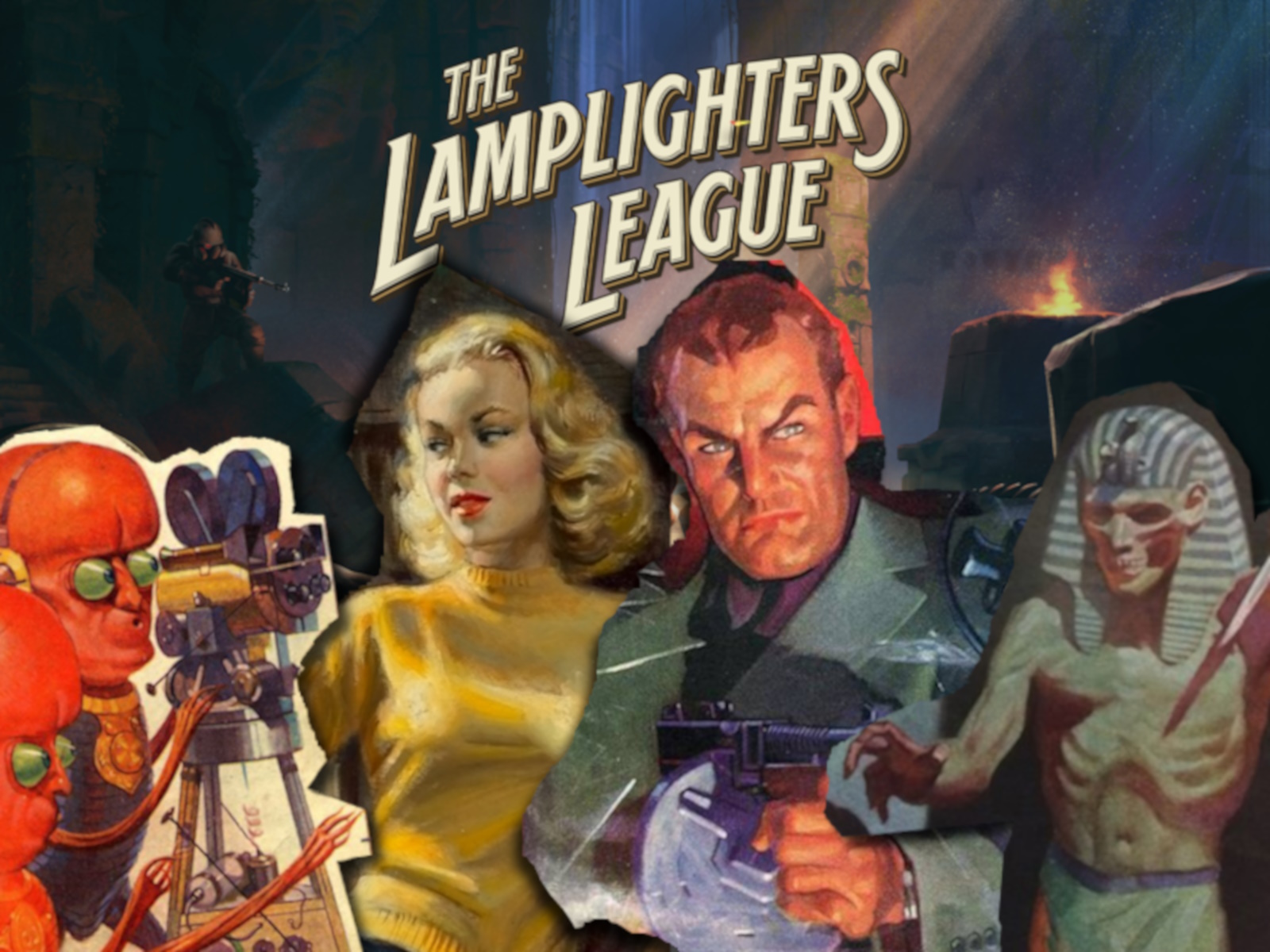For pulp adventures, this is a decent enough time. I won’t claim it’s a renaissance, but miniature gamers can enjoy titles like Pulp Alley and half the Osprey roster. In video games, we’ve jus seen Strange Brigade released – and I just finished playing The Lamplighters League. So how did Harebrained Schemes do with this tactical RPG of two-fisted action and daring-do?
It’s the 1930s and a trio of shady characters – hired muscle, a gunslinger, a thief – are brought together by a mysterious benefactor. They’re to be the core of the new Lamplighters League. Their mission – to fight the mysterious Banished Court and thwart its plans for world domination. But the Banished Court is made up of more than mere mortals and has wiped out the previous League but for a single survivor. The dead were paragons of virtue, some of the best of the best. The new Lamplighters, well, they’re the best at what they do, but what they do isn’t pretty.
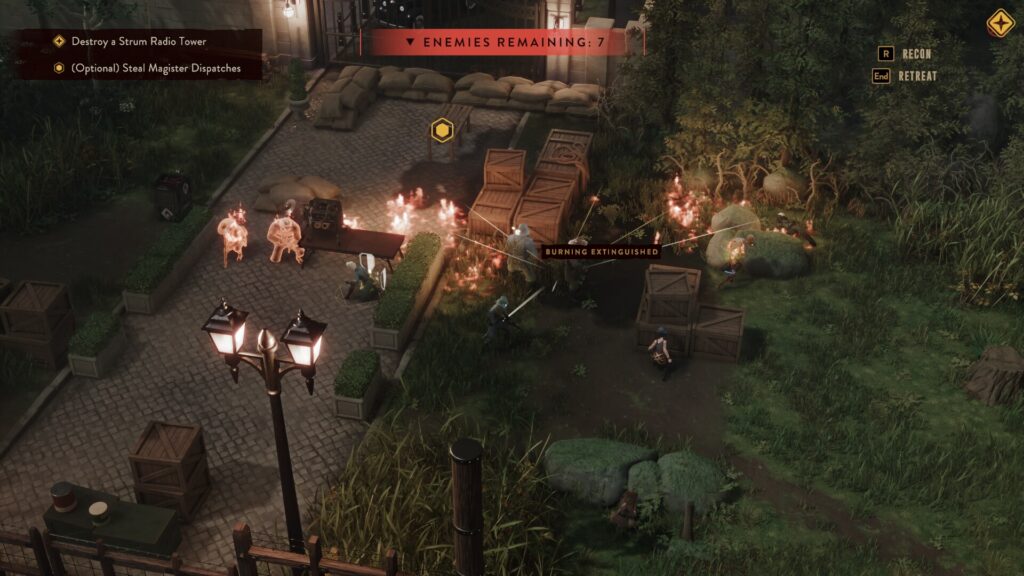
On gameplay terms, The Lamplighters League owes a great deal to Mutant: Year Zero. It’s not just XCOM’s two actions per character, half- and full cover. There’s also exploring the maps in real-time and collecting both lore and loot. Enemies patrol in real-time and their numbers can be thinned via ambushes and class-specific real-time takedowns.
The character classes are very lightly implemented, by the way – they mostly define their real-time abilities. When rubber hits the road, each character has their own bespoke set of skills.
Heroics need heroes
And that’s how we get to the killer feature of The Lamplighters League: the characters. XCOM is built on on a constant churn of randomly generated mooks – your emotional investment only comes from use and maybe naming them after your real-life friends. However, this leaves the mooks unmoored from the wider world of the game. They don’t have character traits and backstories – only their class and loadout. They don’t even interact with other members of the team.
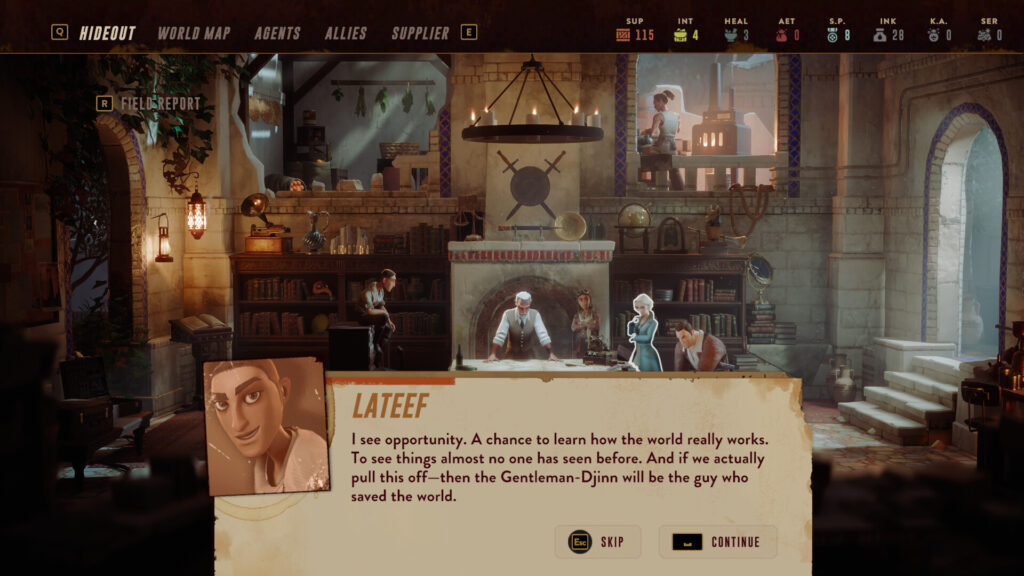
Not so in The Lamplighters League. Each character has their own backstory – and while it may not be very deep, having at least a single personality trait per helps immensely. Whether it’s engaging in scripted dialogues in HQ or dropping quips on the field, each Lamplighter lives and breathes in the world, reacts to the the powers of their peers and opens up about their backstory.
Why does Eddie say “Ordinance ain’t pretty, but it sure is effective?” Because he was at the Belleau Woods. Why is Celestine afraid “of failing… of falling?” Well, her spy training is more than natural. And why does Fedir go “Don’t struggle – less mess!”? That may have something to do with his background as an enforcer for an Odessan mobster, which is what he did until the Court came for him.
All that voice acting and character moments make The Lamplighters League the most characterful tactical RPG since Mutant: Year Zero. But the size of the roster – you can recruit up to around 10 agents – and the potential of permanently losing them on higher difficulty levels (I played on normal, so the loses were temporary) reminds me of Jagged Alliance 2. Back then, only the player stand-in was a custom character. Everyone else was a person with their own skills, quirks, and interactions with the other mercs.
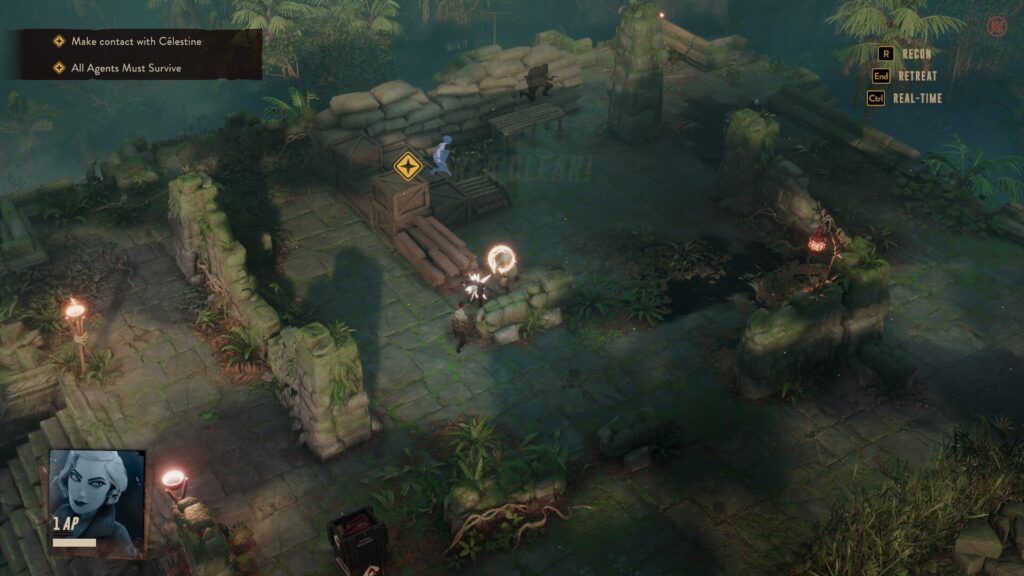
So immediately, your soldiers are more memorable than any custom-built loser could ever be, and their loss on the field means more than XP down the drain.
Just to reiterate: making each agent in The Lamplighters League a fully-voiced character you can’t customize outside their consumables and modifier items was absolutely the right choice.
Weasels can’t tear at your flesh if you shoot them
Now, back to the fight: most of the time, you’ll only take up to three of the Agents onto a mission. I used to default to one of each class due to their real-time abilities. Bruisers can rush in a line, taking down up to three enemies. They can also knock-down special cracked walls. Saboteurs can toss a combination of alarm clock and electrical mine. It can lure in guards before taking down a single enemy. It also electrifies water and sets oil puddles on fire. Saboteurs can also pick certain locks. Lastly, Sneaks are invisible when in cover, even more than the other agents. They can also climb net-ladders and sucker-punch (stab) individual enemies if close enough.
When you get noticed or just go loud, the enemies will reposition a little so as not to stay in the absolutely open. They also operate on a 2 AP allowance, and as the game goes on, chunkier and meatier versions will appear, with the most basic enemies gaining grenade attacks. They’ll usually maneuver quite aggressively to get the best angle on your dudes – and even go on overwatch.
You too can go on overwatch with ranged characters. But unlike in XCOM, where it’s often the most temppting choice, your Lamplighters League Agents are gifted with powers that really motivate you to go active and aggressive. Why would I set Eddie on overwatch when his basic attack can target either two different enemies or just shoot a guy twice?
Once you upgrade melee characters to have melee overwatch (doing opportunity attacks on enemies moving adjacent to them), you start playing even more aggressively. Why wouldn’t you leave them positioned where they’d be able to stab someone for free?
There’s no point in counting how many snipers got killed on their own turn while trying to retreat from Ingrid.
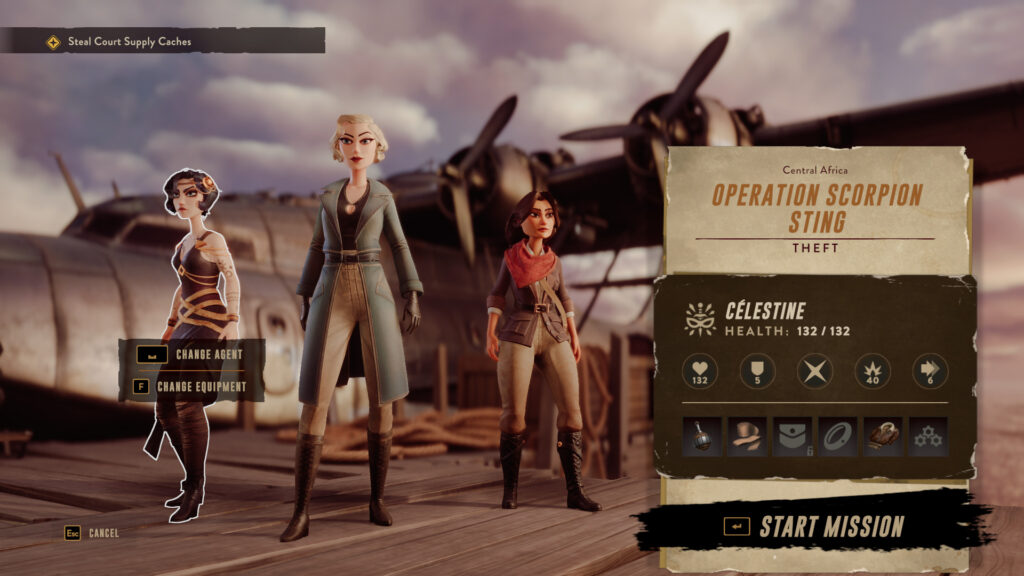
Oh, Ingrid. She’s one of those characters that, with some skill-point and equipment investment, makes mockery of the AP limit. An early upgrade allows her to get an AP after delivering the killing blow. So far, so tame. But eventually you’ll upgrade this power to fire off unlimited times per turn.
Late game Ingrid can put Jar-eel the Razoress to shame – and her only weighted weapon is her weighted gloves.
I accidentally stumbled into something similar with Fedor Volchimorda via an accidental combination of skills and equipment.
Normally, He’s a really tanky character with a double-barrel shotgun that, when wounded, enters a rage that allows him to heal from attacks. Properly tooled and positioned, Fedor not only heals all the damage inflicted to him during the enemy turn, but gains AP every time he’s healed… With the shotgun being a short-range template weapon, you can be swimming in AP.
Signature abilities rock
Now, those are just the two insanely AP-manipulating characters that are fairly straightforward to use. But each Agent in The Lamplighters League comes with signature abilities (of limited uses per mission) in addition to their arsenal of boosts, debuffs and, most importantly, stuff that messes with enemy ability to act. Eddy’s ability to shoot six targets is important not only due to damage output, but also because it flushes them from cover, making them much easier to hit.
He can then lay down his signature move, a jumbo-sized fan template, and shoot any enemy covered by it. Ana the medic can then use her signature AoE heal to not only restore his HP, but also his signature ability charges.
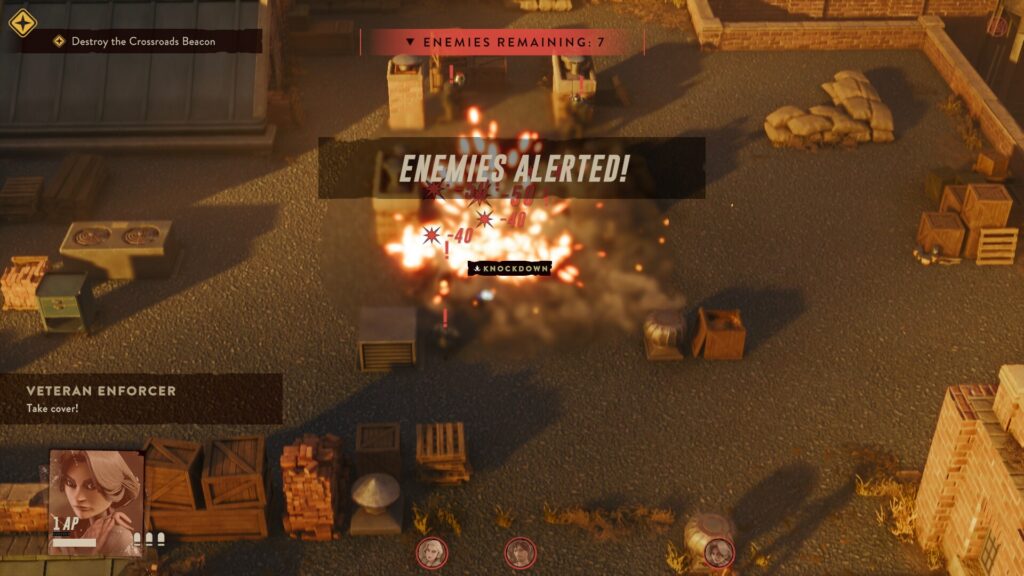
My favorite signature in the game is Celeste’s Mesmerize. At first, it just turns one enemy to your side for a turn. This works wonderfully to neutralize melee powerhouse fish monsters – as they both attack allies and become a fire a magnet themselves. However, if you use it intelligently, I once utilized it assassinate a target when it was surrounded by more guards than I could handle.
To give some perspective on that mission: I lost Eddie while retreating. It wasn’t too bad: on normal difficulty, I was able to launch a rescue mission in a couple of weeks. But it still was a harrowing showdown.
Giving burning mummies PTSD
Back to signature: one of the coolest features of Mesmerize is that Celeste is only marginally limited by the single charge it comes with. That’s because Celeste can recharge the power by killing stress-broken enemies. She’s also a character very good at piling on stress.
Oh, stress. The Lamplighters League asks the question, “what if the XCOM ‘rookie goes insane, shoots friendlies’ feature also applied to enemies?” Even an attack that whiffs can incur stress, and stress break makes enemies attack friendlies. When this happens to your agents, they just lose an AP and suffer a specific debuff for a few weeks.
However, unlike our Agents, stress broken enemies can also be instantly killed with a melee coup-de-grace attack – a free attack at that!
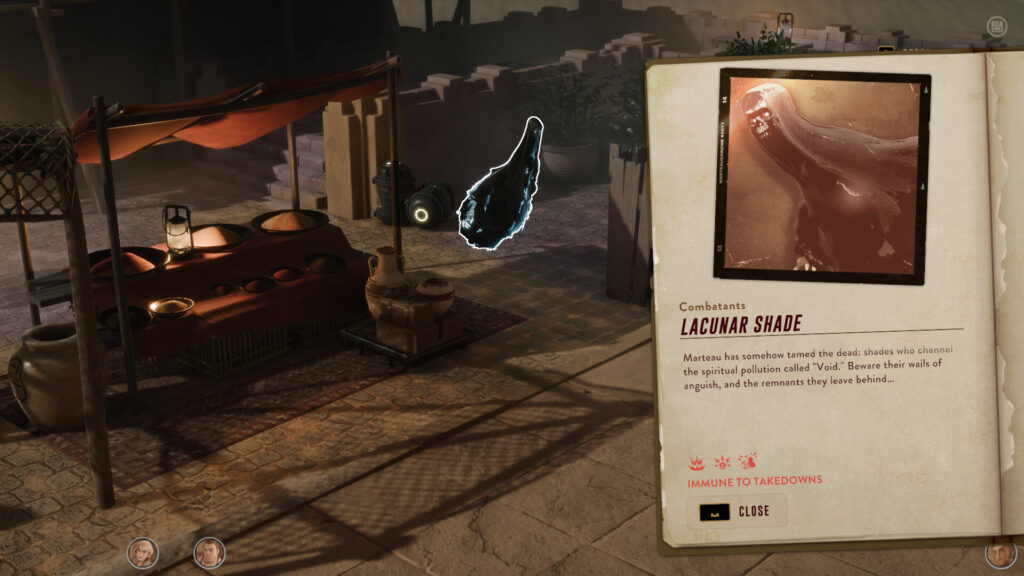
You probably already noticed that I mentioned “later on” a few times. That’s because The Lamplighters League has a very interesting power progression. In the early game, you’re definitely at a disadvantage, needing every piece of cover and every grenade you can get your hands on. By the late game, your opening moves will paralyzing half the enemy force while the rest is on fire, debuffed or too far to attack (or be attacked). There’s a palpable feeling of POWER – and not just because Fedor can grab ghosts, mummies and Nazi-coded officers by the throat to throw them at the nearest group of enemies.
Granted, you’re still not invulnerable. HP and armor only stack so much, and enemies still remain powerful enough to take you down via mass fire or crits. So it’s less of a power trip that the ending of Mechanicus was and you’ll need to be careful, but you’ll still feel immensely more powerful.
Mechanics? In my game?
Now, an Agent can go down and get up two times per mission. Third time means death or capture. It will also mean that they’ll remain hurt on the campaign map, needing to either sit out the next mission or go into the field weakened. Stress breaks, on the other hand, deal negative cards from the Undrawn Hand.
Which is another important system in The Lamplighters League! For while you can’t really choose how to build and specialize your characters, the Undrawn Hand, presenting a few randomized choices after any mission, allows you to give them up to three new abilities. For example, my Ingrid is a long time fan of The Tyrant, which makes attacking enemies get stress. Other card effects can be active abilities such as The Waif giving an enemy 50% defense debuff for a turn. Yet others give armor in exchange for making the character slower or makes the character immune to stress, taking it out of health instead.
This ties into items as well. Three slots a character has for consumables like grenades and medikits. Three other slots are meant for armor and knickknacks, like the Viriditas Amulet that turns Fedor into a self-sustaining whirlwind of buckshot and head-butts.
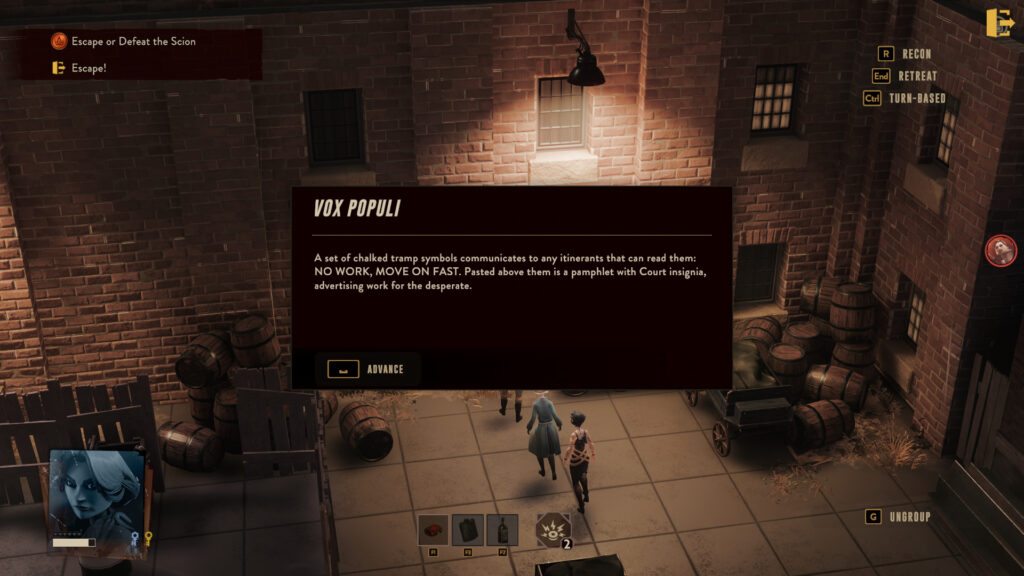
Or imagine making a character cause bleeding on attacks… and heal when attacking bleeding enemies.
These items are either unlocked via the Allies tab, purchased at the store, or won for running missions.
Another important aspect of playing missions is stopping the Banished Court. It’s split into three houses, each with a progress clock. At certain clock breakpoints, the power of a house increases. The Court needs to run the clock to win, so your missions actually work to turn them back. Some missions are better for that than others.
As missions are tied to specific houses, they also feature their specific enemies. The basic human troopers are the same, but there are… others. House Nicastro have their dead aquatic god’s Deepspawn, the most dangerous melee enemy in the game, as an early unlock. The very Nazi-tinged house Sturn opens up with flaming mummies and it only gets worse. And House Marteu is what would happen if Musk was really as talented as fanboys claim to be… and incidentally harnessed ghosts.
I love it, it’s all great, especially since missions can also have additional modifiers like providing healing in cover, showing increased numbers of special enemies, or even the forces of two houses.
Unfortunately, this is where I get to my main criticism of the game. Just like with XCOMs, The Lamplighters League suffers from a dearth of environmental variety, especially when it comes to industrial docks and city roofs. After all, those would have the most significant difference between cultures and continents, especially in the 1930s. But they don’t, and even the layouts remain the same. The only thing that changes is all the scattered terrain bits.
Some types of special missions are always run on the same map as well, which just feels bad.
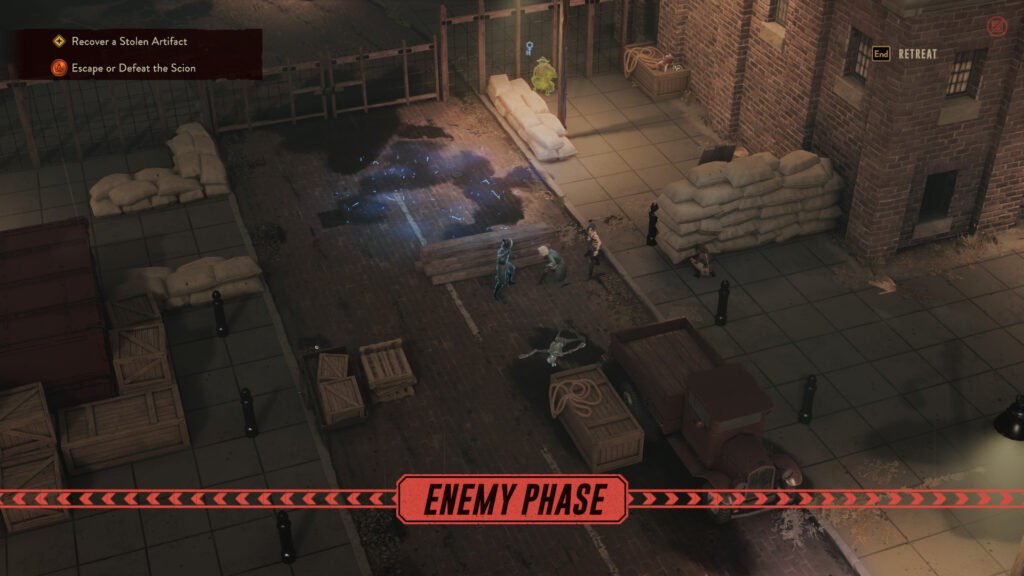
Globe-trotting adventures just don’t have the same feeling when everywhere looks the same – and when descriptions of environmental weirdness start repeating.
Otherwise, The Lamplighters League looks nice. The stylized characters are all cool and memorable, very fitting for the type of ne’er-do-wells you’d expect to be drawn to a pulp adventure (with some subtly placed representation as well). Meanwhile, the silhouette of the enemy tells you what to expect, at least in terms of endurance. I would have preferred more model variety or changes to their outfits as unit types are upgraded during the campaign, but c’est la vie.
At least the gasmask goon – it’s the 1930s, so they also have stahlelms and anachronistic Schmeissers (unless the Banish Court is the reason why MP-36s are almost unheard of) – is a classical design. Incidentally, I think the shotgun-armed Scourge would make a nice template for a DLC character. I already bought the Nocturne DLC because someone on Cohost liked her (yes, I own a DLC for a game I don’t have), and she’s patterned on a mook… so why not a repentant Banished Court soldier next?
Back on track, The audio is great throughout. Those unit barks wouldn’t so memorable if they weren’t as well delivered as they were written! The music also has some great tunes going for it. I’m unlikely to be listening to it the same way I do with Dominions 5 soundtracks, but it’s always good.
Game Good
The Lamplighters League is a solid game for fans of pulp and/or Mutant Year Zero. Having set characters instead of building your own randies opens avenues for a lot of personality and charm. It’s also a game that lets you feel that your strength is growing, turning your group of agents into a nearly-unstoppable force. And when all of that is bracketed in some good writing, what else can you ask for?
Oh yeah, more urban map variety.

